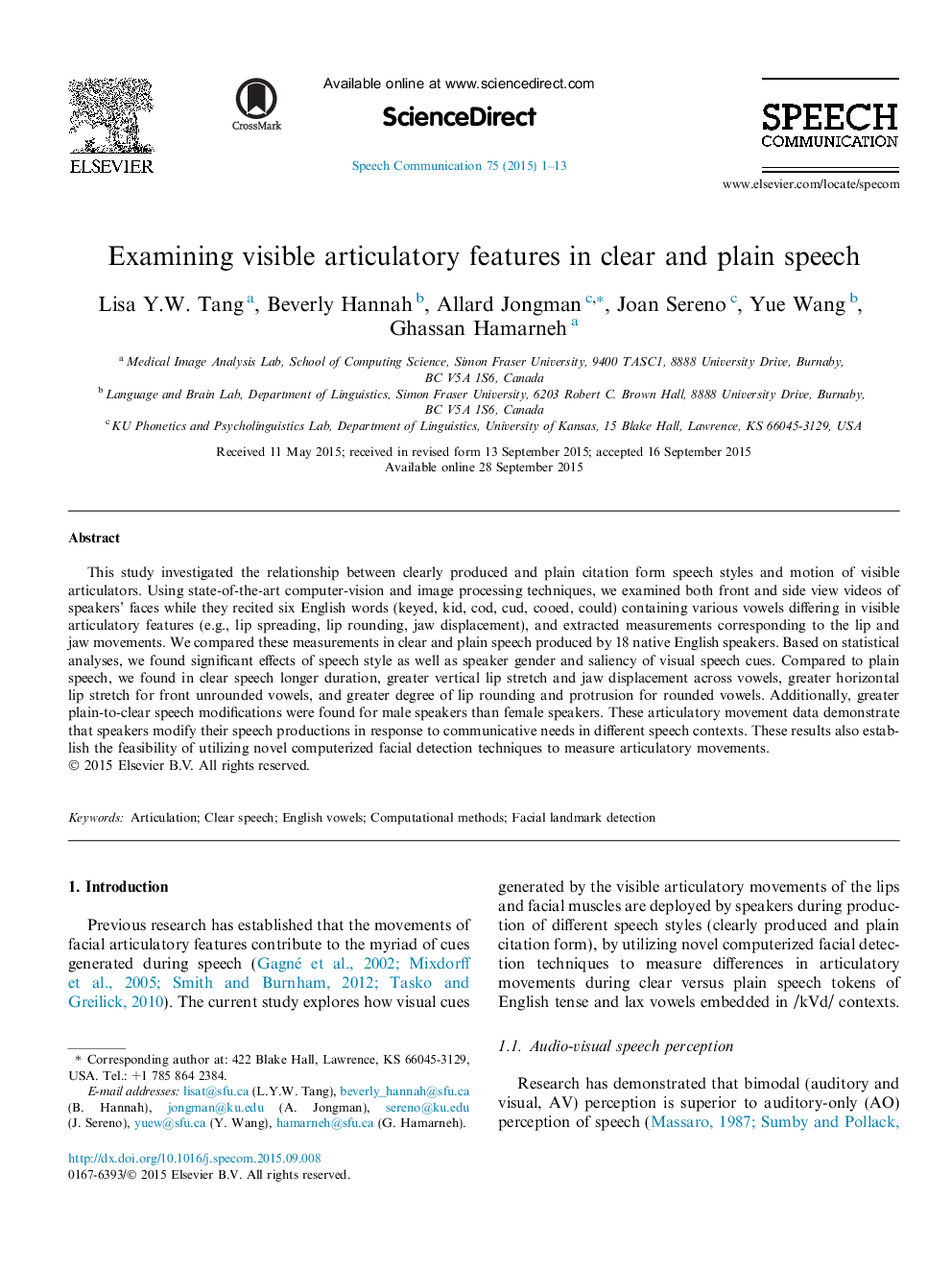| Article ID | Journal | Published Year | Pages | File Type |
|---|---|---|---|---|
| 566021 | Speech Communication | 2015 | 13 Pages |
•We examine articulation of English vowels in clear and plain speech.•We use computerized facial detection techniques to measure articulatory movements.•Measurements involve lip and jaw movements from front- and side-view videos.•Clear speech involves longer duration and greater lip and jaw displacement.•Speakers modify speech productions in clear versus plain speech contexts.
This study investigated the relationship between clearly produced and plain citation form speech styles and motion of visible articulators. Using state-of-the-art computer-vision and image processing techniques, we examined both front and side view videos of speakers’ faces while they recited six English words (keyed, kid, cod, cud, cooed, could) containing various vowels differing in visible articulatory features (e.g., lip spreading, lip rounding, jaw displacement), and extracted measurements corresponding to the lip and jaw movements. We compared these measurements in clear and plain speech produced by 18 native English speakers. Based on statistical analyses, we found significant effects of speech style as well as speaker gender and saliency of visual speech cues. Compared to plain speech, we found in clear speech longer duration, greater vertical lip stretch and jaw displacement across vowels, greater horizontal lip stretch for front unrounded vowels, and greater degree of lip rounding and protrusion for rounded vowels. Additionally, greater plain-to-clear speech modifications were found for male speakers than female speakers. These articulatory movement data demonstrate that speakers modify their speech productions in response to communicative needs in different speech contexts. These results also establish the feasibility of utilizing novel computerized facial detection techniques to measure articulatory movements.
